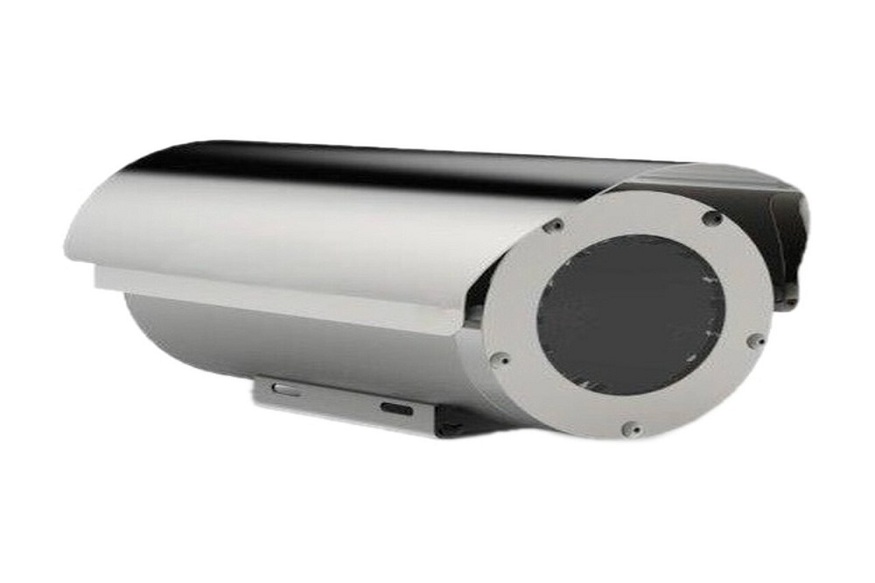In a world increasingly reliant on complex industrial processes, the risk of explosive atmospheres is an ever-present, yet often unseen, danger. From chemical plants and oil refineries to grain silos and pharmaceutical manufacturing facilities, certain environments contain flammable gases, vapors, dusts, or fibers that, when mixed with air and an ignition source, can lead to catastrophic explosions. In such volatile settings, the protection of human life and valuable assets becomes paramount. This is where Explosion Proof Atex Camera – Exloc emerge as indispensable guardians, silently vigilant and robustly engineered to provide critical surveillance without becoming a part of the danger itself.
These specialized cameras are far more than just hardened versions of their conventional counterparts. They are meticulously designed and certified to operate safely in hazardous locations, ensuring that the act of monitoring doesn’t inadvertently trigger the very disaster it aims to prevent. Their deployment is a testament to an industry’s commitment to safety, translating directly into enhanced operational security and invaluable peace of mind.
Engineering for Survival: The Core of Explosion Proof Design
The fundamental principle behind explosion-proof cameras is simple yet profound: contain or prevent any potential ignition source. This is achieved through a combination of ingenious design features and rigorous testing:
- Robust Enclosures:One particularly remarkable aspect of these cameras is their heavy-duty casing.Typically constructed from high-grade stainless steel or robust aluminum alloys, these enclosures are designed to be strong enough to contain an internal explosion.Should flammable gases or dust somehow penetrate the casing and ignite, the explosion is confined within, preventing the flame or hot gases from escaping and igniting the external atmosphere. These housings are often purged with inert gases like nitrogen to create a positive pressure inside, actively preventing hazardous substances from entering.
- Intrinsically Safe Circuitry:Beyond physical containment, many explosion-proof cameras incorporate intrinsically safe circuitry. This design philosophy limits the electrical and thermal energy of a circuit to a level below what is required to ignite the most sensitive explosive mixture. This means that even if a fault occurs, the sparks or heat generated are insufficient to cause an explosion.
- Specialized Gland and Sealing Systems: All cable entries and penetrations are fitted with explosion-proof glands and sealing systems. These components ensure that no flammable materials can enter the enclosure through cable pathways and that any internal explosion cannot escape along the wiring.
- Low Power Consumption and Heat Management: These cameras are designed for highly efficient operation, minimizing heat generation. Any heat that is produced is effectively dissipated through the robust casing, preventing the external surface temperature from reaching levels that could ignite hazardous substances.
Protecting People: The Foremost Priority
The primary benefit of deploying explosion-proof cameras is the unparalleled protection they offer to human life. In environments where a single spark can trigger a catastrophe, these cameras allow for continuous, remote monitoring without placing personnel directly in harm’s way.
- Remote Surveillance:Operators can monitor critical processes, identify potential anomalies, and respond to incidents from a safe control room, minimizing human exposure to hazardous zones.
- Emergency Response: During emergencies, real-time visual information aids response teams in assessing the situation, guiding rescue efforts, and making informed decisions to mitigate risks, all while maintaining a safe distance.
Protecting Assets: Safeguarding Operations and Investments
Beyond human safety, explosion-proof cameras play a vital role in safeguarding enormous financial investments and ensuring operational continuity.
- Preventing Catastrophic Damage:By allowing early detection of issues like leaks, overheating equipment, or unusual activity, these cameras can help prevent minor incidents from escalating into massive explosions that would destroy facilities, halt production for extended periods, and incur billions in repair costs.
- Process Monitoring and Optimization: In continuous processing industries, cameras offer real-time visual feedback on critical equipment and processes.This allows for proactive maintenance, identification of inefficiencies, and optimization of operations, reducing waste and increasing productivity.
- Regulatory Compliance:Many industries operating in hazardous environments are subject to strict regulatory oversight. Deploying certified explosion-proof cameras helps companies meet these compliance requirements, avoiding hefty fines and legal liabilities.
Conclusion: Silent Sentinels in High-Risk Environments
Explosion-proof cameras are more than just surveillance tools; they are critical components of a comprehensive safety strategy in hazardous industrial environments.They are silent sentinels, meticulously engineered to withstand and mitigate the most extreme risks, safeguarding both the lives of the people who work in these facilities and the multi-billion dollar assets that drive global economies.




